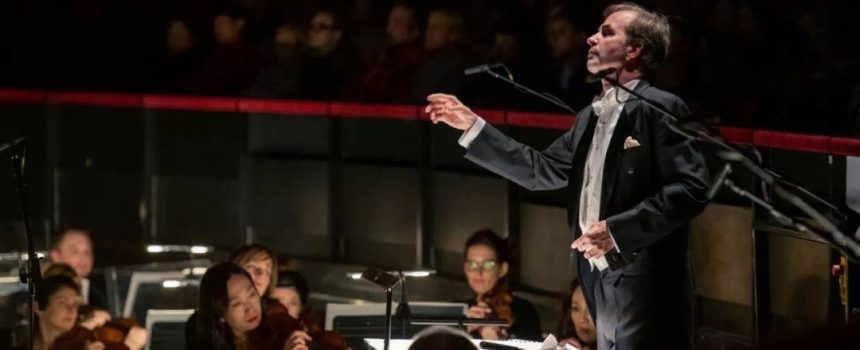A Conversation with Music Director and Principal Conductor Charles Barker About “Swan Lake”

Though Music Director and Principal Conductor Charles Barker has conducted productions of Swan Lake hundreds of times, he says that Artistic Director Susan Jaffe’s upcoming production is completely different than what came before. Read on to learn why Charles is looking forward to this new production, and don’t miss your chance to experience Tchaikovsky’s evocative score played by a live orchestra May 6 – 15 at the Benedum Center!
What makes the score of Swan Lake different from other ballet scores?
For me, the interplay of B major and B minor is very interesting. Tchaikovsky single-handedly raised the level of music for ballet to a new plane. Music was no longer accompaniment but a major force in the production. Using harmony as a structural basis for the ballet along with very dramatic orchestration makes Swan Lake stand out from other ballets written by Minkus or Pugni in the 1880s.
| “Swan Lake with the PBT Orchestra” by the Numbers | |
| First Violin | 9 |
| Second Violin | 8 |
| Viola | 4 |
| Cello | 4 |
| Bass | 3 |
| Flute | 3 |
| Oboe | 2 |
| Clarinet | 2 |
| Bassoon | 2 |
| Horn | 4 |
| Trumpet | 4 |
| Trombone | 3 |
| Tuba | 1 |
| Percussion | 2 |
| Harp | 1 |
What are some moments in the score that stand out to you as highlights and why?
Many are unaware that Ricardo Drigo, the music director of the Imperial Theatre, and Marius Petipa, a choreographer and pedagogue, rearranged the order of Swan Lake when they restaged the work in the late 1890s. Tchaikovsky had been dead for several years and Drigo, one of his close friends and fellow composers, took it upon himself to “rewrite” and reorder some of the score to make it more like other romantic ballets of the time.
For instance, the very familiar Black Swan Pas de Deux was originally in Act I. Drigo and Petipa moved it to Act III and inserted other music into the Pas as variations for the dancers. Drigo also rewrote the ending of both the Act II and Act III Pas de Deuxs. Reorchestrating or rearranging Tchaikovsky is a difficult and complicated task — not one to be taken on casually. Tchaikovsky was a wonderful orchestrator. Since Drigo was his friend and a very good composer in his own right, his reorchestrations are still used today and generally accepted as standard.
Do you have a personal connection to this score?
The violinist who Tchaikovsky wrote all of his solos for was Leopold Auer. He was a great violinist and leader of the Imperial Theatre Orchestra. Both Tchaikovsky and Drigo wrote specifically with Auer in mind. During the 1917 Russian Revolution, it became impossible to perform, so Auer emigrated to America bringing with him his very young and talented assistant, Raphael Bronstein. Bronstein was my violin teacher when I arrived in New York in the mid 70s. Carrying on this tradition is something I think about all the time.
How do you feel live music impacts the audience experience of seeing a ballet?
Live music equals spectacle to me. Recorded music in no way infringes upon the quality of the dancing but it limits the amount of expressiveness of any given step or phrase within the piece. With live music, the interaction between the dancer and conductor makes for spontaneous creativity right before the eyes of the audience. It is as if the audience is watching an artistic creation come to life with movement and music. I can think of nothing more relevant to ballet than that.
You can help Pittsburgh Ballet Theatre continue to bring the full power of the PBT Orchestra to even more season productions and ensure live music at over 500 individual performances over the next 50 years when you contribute to the live music fund. Learn more here.
Don’t miss your chance to see Swan Lake with the PBT Orchestra May 6 – 15 at the Benedum Center!
Photo © Ye Lihong
